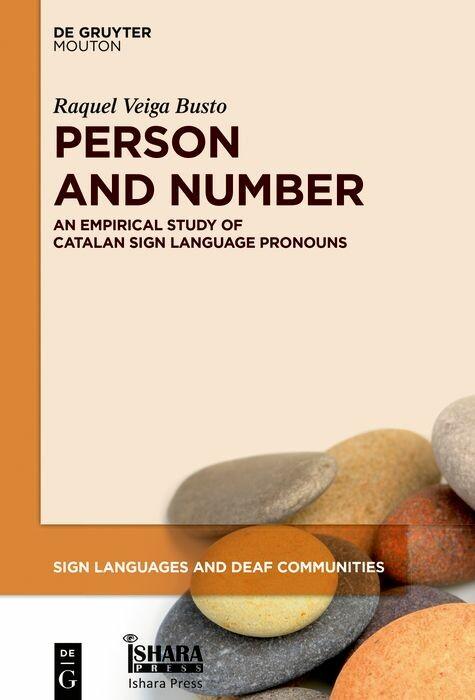
Sofort lieferbar (Download)
Person and number are two basic grammatical categories. However, they have not yet been exhaustively documented in many sign languages. This volume presents a thorough description of the form and interpretation of person and number in Catalan Sign Language (LSC) personal pronouns. This is the first book exploring together the two categories (and their interaction) in a sign language.
Building on a combination of elicitation methods and corpus data analysis, this book shows that person and number are encoded through a set of distinctive phonological features: person is formally marked through spatial features, and number by the path specifications of the sign. Additionally, this study provides evidence that the same number marker might have a different semantic import depending on the person features with which it is combined.
Results of this investigation contribute fresh data to cross-linguistic studies on person and number, which are largely based on evidence from spoken language only. Furthermore, while this research identifies a number of significant differences with respect to prior descriptions of person and number in other sign languages, it also demonstrates that, from a typological standpoint, the array of distinctions that LSC draws within each category is not exceptional.
Raquel Veiga Busto, Universität Amsterdam, Niederlande.
Building on a combination of elicitation methods and corpus data analysis, this book shows that person and number are encoded through a set of distinctive phonological features: person is formally marked through spatial features, and number by the path specifications of the sign. Additionally, this study provides evidence that the same number marker might have a different semantic import depending on the person features with which it is combined.
Results of this investigation contribute fresh data to cross-linguistic studies on person and number, which are largely based on evidence from spoken language only. Furthermore, while this research identifies a number of significant differences with respect to prior descriptions of person and number in other sign languages, it also demonstrates that, from a typological standpoint, the array of distinctions that LSC draws within each category is not exceptional.
Raquel Veiga Busto, Universität Amsterdam, Niederlande.
Produktdetails
Erscheinungsdatum
03. Juli 2023
Sprache
englisch
Seitenanzahl
256
Dateigröße
13,27 MB
Reihe
Sign Languages and Deaf Communities [SLDC]
Autor/Autorin
Raquel Veiga Busto
Verlag/Hersteller
Kopierschutz
mit Wasserzeichen versehen
Family Sharing
Ja
Produktart
EBOOK
Dateiformat
PDF
ISBN
9783110988956
Entdecken Sie mehr
Bewertungen
0 Bewertungen
Es wurden noch keine Bewertungen abgegeben. Schreiben Sie die erste Bewertung zu "Person and Number" und helfen Sie damit anderen bei der Kaufentscheidung.









